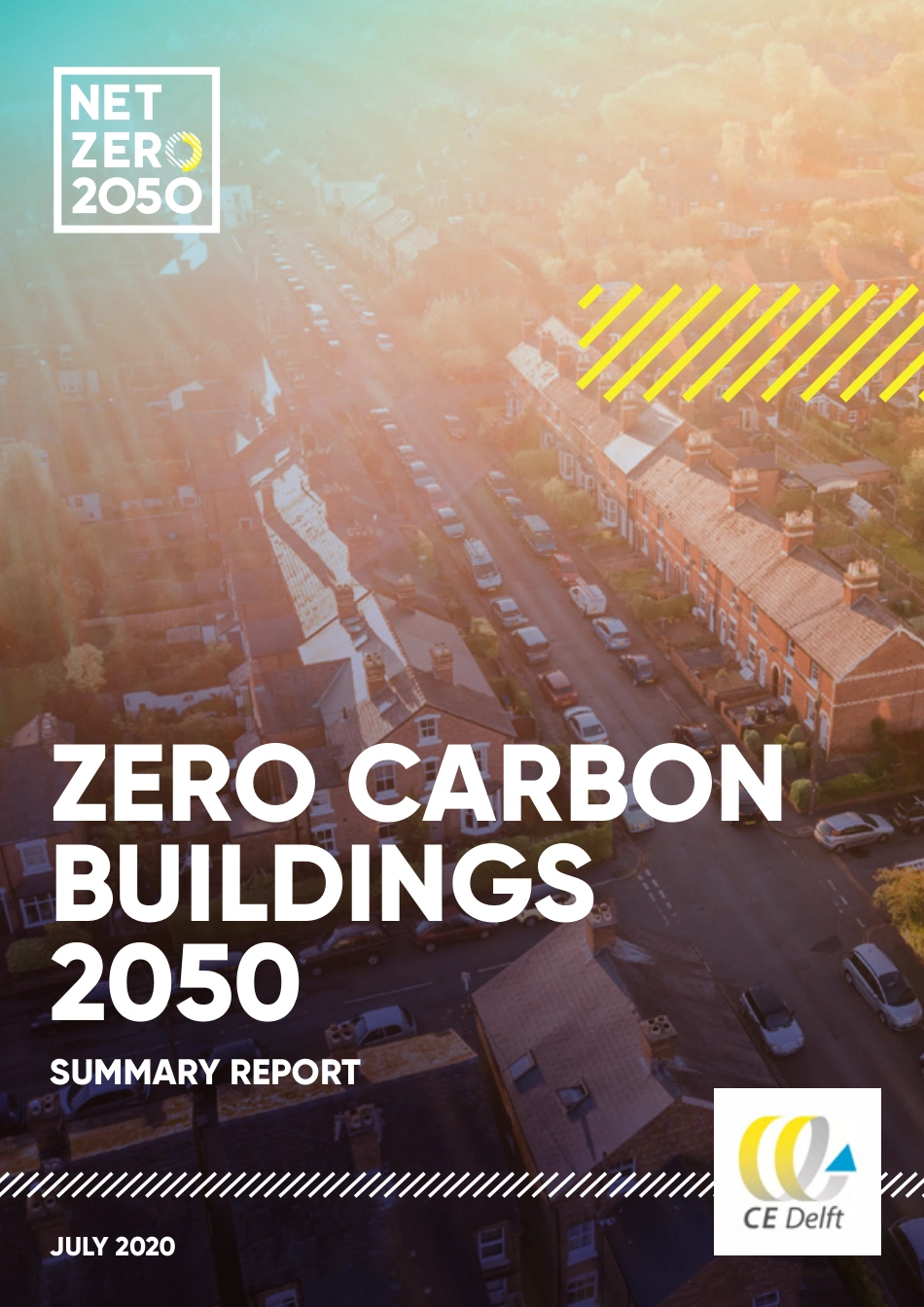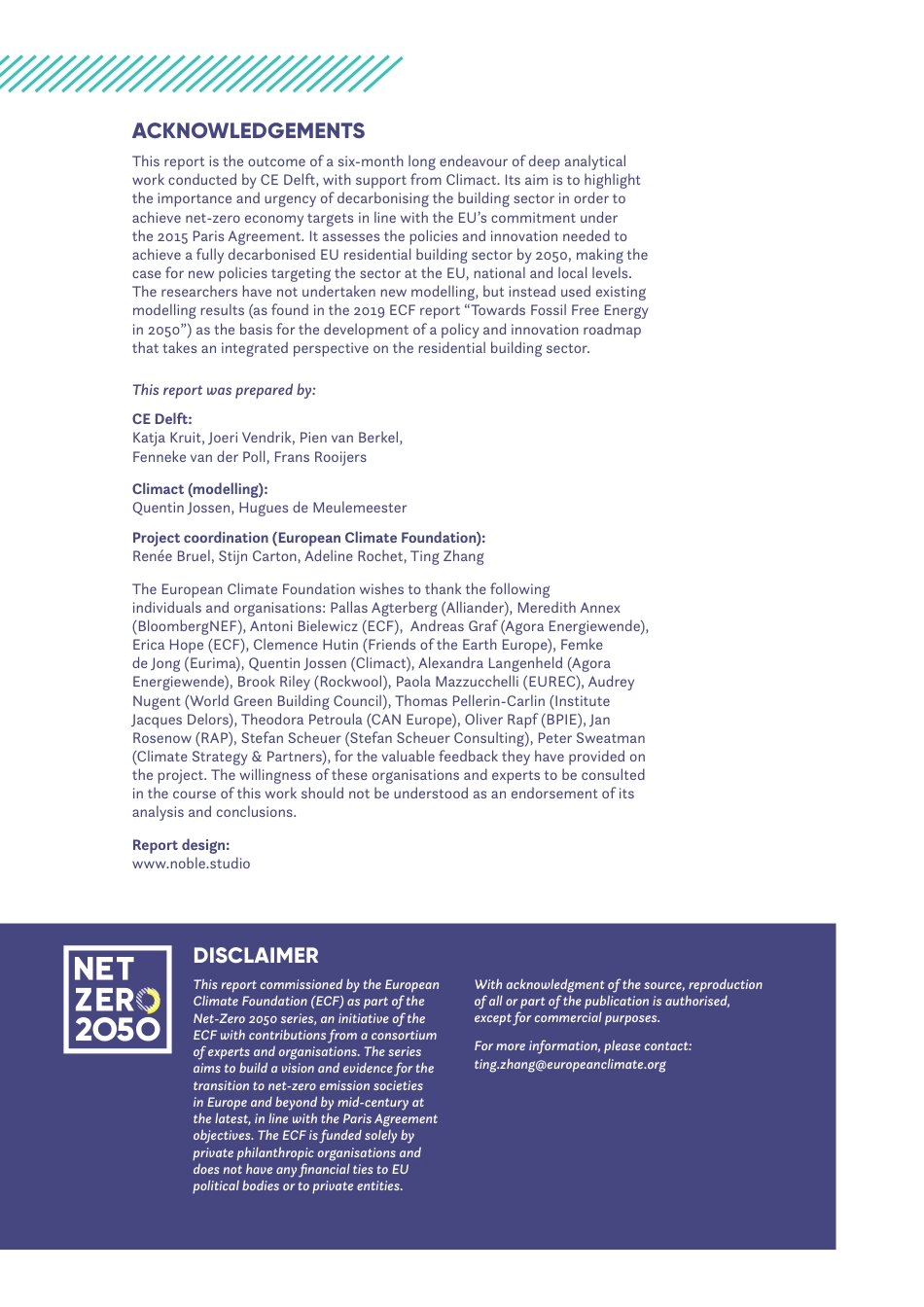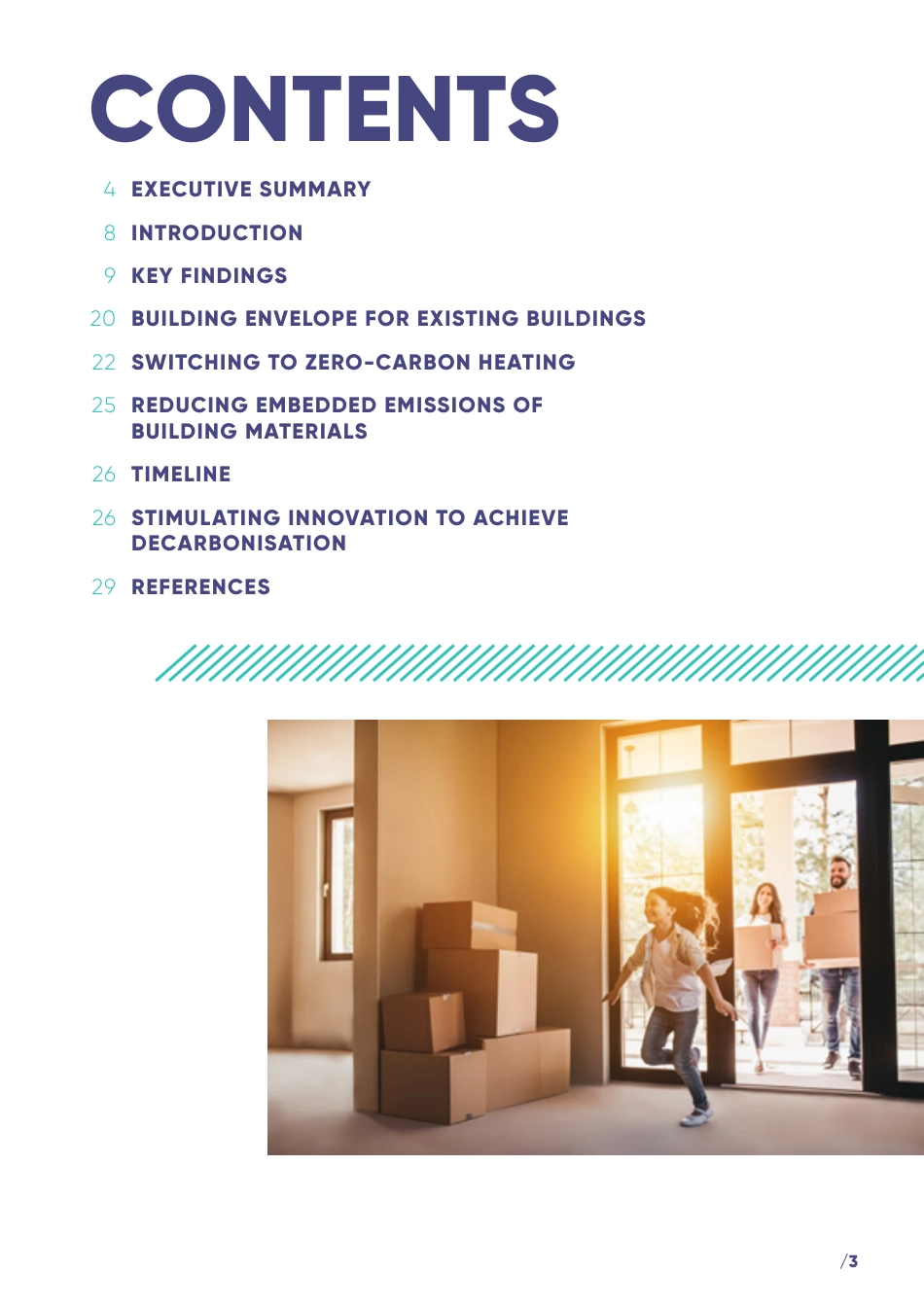ZERO CARBON BUILDINGS 2050SUMMARY REPORTJULY 2020ACKNOWLEDGEMENTSThis report is the outcome of a six-month long endeavour of deep analytical work conducted by CE Delft, with support from Climact. Its aim is to highlight the importance and urgency of decarbonising the building sector in order to achieve net-zero economy targets in line with the EU’s commitment under the 2015 Paris Agreement. It assesses the policies and innovation needed to achieve a fully decarbonised EU residential building sector by 2050, making the case for new policies targeting the sector at the EU, national and local levels. The researchers have not undertaken new modelling, but instead used existing modelling results (as found in the 2019 ECF report “Towards Fossil Free Energy in 2050”) as the basis for the development of a policy and innovation roadmap that takes an integrated perspective on the residential building sector. This report was prepared by:CE Delft: Katja Kruit, Joeri Vendrik, Pien van Berkel, Fenneke van der Poll, Frans RooijersClimact (modelling): Quentin Jossen, Hugues de MeulemeesterProject coordination (European Climate Foundation): Renée Bruel, Stijn Carton, Adeline Rochet, Ting ZhangThe European Climate Foundation wishes to thank the following individuals and organisations: Pallas Agterberg (Alliander), Meredith Annex (BloombergNEF), Antoni Bielewicz (ECF), Andreas Graf (Agora Energiewende), Erica Hope (ECF), Clemence Hutin (Friends of the Earth Europe), Femke de Jong (Eurima), Quentin Jossen (Climact), Alexandra Langenheld (Agora Energiewende), Brook Riley (Rockwool), Paola Mazzucchelli (EUREC), Audrey Nugent (World Green Building Council), Thomas Pellerin-Carlin (Institute Jacques Delors), Theodora Petroula (CAN Europe), Oli...



